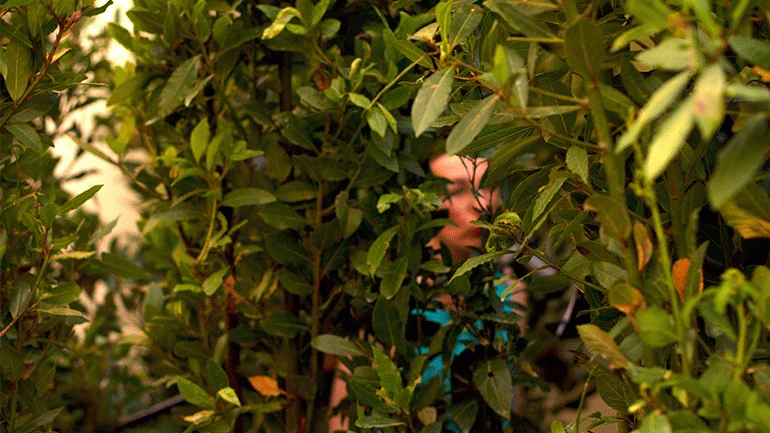
Held on 24 oct 2018
Arbusto Ardiente (Burning Bush) was conceived after Amaia Urra’s artist residency in the landscape garden of Parc Jean-Jacques-Rousseau, Ermenonville, Oise, Paris, where the philosopher lived in the final weeks of his life. The piece, one of the artist’s latest works, sets out from the reading and re-writing of different botany manuals, putting forward a new classification of plants that elude objectifiable categories of science and are classified with links to popular culture and other semantic, formal and affective logics. Similar to other works by Amaia Urra, this piece focuses on language and the act of naming things — and the difficulty this entails.
Her first performance, El Eclipse de A. (The Eclipse of A.), was first rendered in 2002 in Arteleku, inside the Mugatxoan programme of artistic creation. The work reflects on waiting as a mental and bodily state that subscribes to a daily temporality but is separated from it, thus causing a suspended general rhythm, advocating the appearance of different relationships. The work is followed by others which explore language’s capacity to determine reality and awaken in the artist an interest in what happens on the margins, whether in non-productive temporalities or words no longer in use. Writing, repetition, list creation and the search for and comparison with different official definitions accepted by dictionaries or encyclopaedias feed into a survey in which writing, reading and action are joined to song, wanderings and other forms of drifting, presenting situations that reveal — from a poetic slant — that which is not seen or heard, that which is not considered.
A common thread running through all of Urra’s actions is the synthetic use of language, whether it be spoken, sung, read or hummed. In some, such as Una vuelta-ta (2013-2016), Calles (2012-2014) and Ahora (2015-2016), this is improvised through highly specific rules of play, with minimal variations that work inside previously defined limits. In others, which the artist calls ‘synonym drifts’, the text works as a score written beforehand, where lists of verbs such as ‘disappear, appear, renounce, inaugurate, walk, wander, hum…’. channel literal actions shaped by the meaning of words in the most updated official dictionary, whilst also leading out into unexpected actions, forcibly improvised in a particular place.
In 2012 the action Renuncio, devised for the festival In-presentable in La Casa Encendida, began with the artist intoning the word ‘renuncio’ (renounce) in one of the rooms, before leaving both the room and the building, like someone following the trail of a melody. She continued walking and singing out in the street until she got into a taxi under the watchful eye of the audience, who witnessed how her presence and voice faded into the distance. Since then, she has carried out actions in site-specific contexts: institutions such as museums, galleries and theatres, or open spaces inside or outside the city.
More than an action, Arbusto Ardiente is offered as a situation or landscape, with the sound of the voice intervening and camouflaging with the vegetation, evoking scenes that would be at home in romantic novels, while the perception of the voice is transformed via repetition to trigger displacements of meaning.
Más que una acción, Arbusto Ardiente se presenta como una situación o un paisaje. El sonido de la voz interviene y se camufla en la vegetación, evocando escenas propias de las novelas románticas, mientras la percepción de la voz se transforma gracias a la repetición, provocando desplazamientos del sentido.
Created and performed by
Amaia Urra
Sound
Rafael Martínez del Pozo
In collaboration with
Teatros del Canal de la Comunidad de Madrid
Curatorship
Isabel de Naverán
Organised by
Museo Reina Sofía
In collaboration with
Participants
Amaia Urra (Donostia / San Sebastián, 1974) is an artist with a degree from the University of the Basque Country, where she specialised in Sculpture in 1998. In 2002 she presented her first performance, El eclipse de A., produced by Arteleku in the programme Mugatxoan.
Between 1999 and 2009 Urra lived in Paris, Brussels, Madrid and Berlin, where she worked with different choreographers, including: Jérôme Bel, Cristina Blanco, Blanca Calvo, Juan Domínguez, María and Cuqui Jerez, Xavier le Roy and Ion Munduate.
Her pieces have been performed in spaces and at meetings and festivals such as Art nomade, the international meeting of performance in Saguenay (Quebec); Axeneo7 & SAW Gallery in Gatineau (Ottawa); Líneas de acción in Casa Maauad (Mexico City); the festival In-presentable in La Casa Encendida (Madrid); the 2D2H festival (Fuenterrabía, Hendaya); the space Bulegoa z/b (Bilbao); the series Ecolalias on the Museo Reina Sofía’s RSS Radio; Zarata Fest (Bilbao), in the Azkuna contemporary culture centre (Bilbao); the 15th edition of the Picnic Sessions at the Centro de Arte Dos de Mayo (CA2M, Móstoles); and the Héctor Escandón gallery (Mexico City), among others.
Amaia Urra currently lives and works in Donostia / San Sebastián, where, between March of 2017 and February 2018, she directed the space Alkolea Beach with Sandra Cuesta and Larraitz Torres.
Más actividades

Oliver Laxe. HU/هُوَ. Dance as if no one were watching you
Tuesday, 16 December 2025 – 7pm
As a preamble to the opening of the exhibition HU/هُوَ. Dance as if no one were watching you, film-maker Oliver Laxe (Paris, 1982) engages in conversation with the show’s curators, Julia Morandeira and Chema González, touching on the working processes and visual references that articulate this site-specific project for the Museo Reina Sofía. The installation unveils a new programme in Space 1, devoted from this point on to projects by artists and film-makers who conduct investigations into the moving image, sound and other mediums in their exhibition forms.
Oliver Laxe’s film-making is situated in a resilient, cross-border territory, where the material and the political live side by side. In HU/هُوَ. Dance as if no one were watching you, this drift is sculpted into a search for the transcendency that arises between dancing bodies, sacred architectures and landscapes subjected to elemental and cosmological forces. As a result, this conversation seeks to explore the relationship the piece bears to the imagery of ancient monotheisms, the resonance of Persian Sufi literature and the role of abstraction as a resistance to literal meaning, as well as looking to analyse the possibilities of the image and the role of music — made here in collaboration with musician David Letellier, who also works under the pseudonym Kangding Ray — in this project.
These inaugural conversations, part of the main working strands of the Museo’s Public Programmes Area, aim to explore in greater depth the exhibition narratives of the shows organised by the Museo from the perspective of artists, curators and specialists.
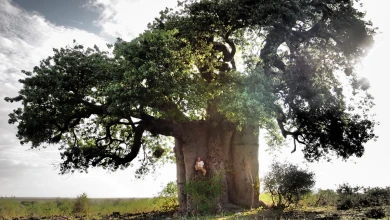
Francisco López and Barbara Ellison
Thursday, 11 December - 8pm
The third session in the series brings together two international reference points in sound art in one evening — two independent performances which converse through their proximity here. Barbara Ellison opens proceedings with a piece centred on the perceptively ambiguous and the ghostly, where voices, sounds and materials become spectral manifestations.
This is followed by Francisco López, an internationally renowned Spanish sound artist, who presents one of his radical immersions in deep listening, with his work an invitation to submerge oneself in sound matter as a transformative experience.
This double session sets forth an encounter between two artists who, from different perspectives, share the same search: to open ears to territories where sound becomes a poetic force and space of resistance.
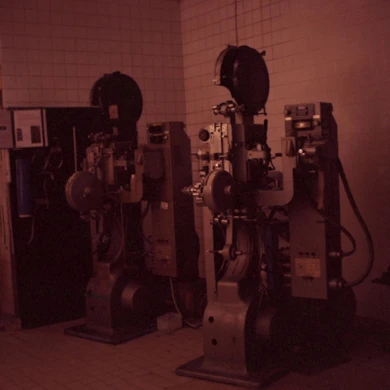
Long Live L’Abo! Celluloid and Activism
4, 5, 6 DIC 2025
L’Abominable is a collective film laboratory founded in La Courneuve (Paris, France) in 1996. It came into being in response to the disappearing infrastructures in artisan film-making and to provide artists and film-makers with a self-managed space from which to produce, develop and screen films in analogue formats such as Super 8, 16mm and 35mm. Anchored in this premise, the community promotes aesthetic and political experimentation in analogue film opposite digital hegemony. Over the years, L’Abominable, better known as L’Abo, has accompanied different generations of film-makers, upholding an international movement of independent film practices.
This third segment is structured in three sessions: a lecture on L’Abo given by Pilar Monsell and Camilo Restrepo; a session of short films in 16mm produced in L’Abo; and the feature-length film Une isle, une nuit, made by the Les Pirates des Lentillères collective.
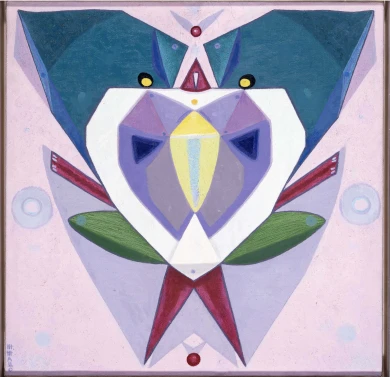
Estrella de Diego Lecture. Holding Your Brain While You Sleep
Wednesday, 3 December 2025 – 7pm
Framed inside the Museo Reina Sofía’s retrospective exhibition devoted to Maruja Mallo, this lecture delivered by Estrella de Diego draws attention to the impact of the artist’s return to Spain after her three-decade exile in Latin America.
Committed to values of progress and renewal in the Second Republic, Mallo was forced into exile to Argentina with the outbreak of the Civil War and would not go back to Spain to settle definitively until 1965 — a return that was, ultimately, a second exile.
Mallo saw out her prolific artistic trajectory with two impactful series: Moradores del vacío (Dwellers of the Void, 1968–1980) and Viajeros del éter (Ether Travelers, 1982), entering her most esoteric period in which she drew inspiration from her “levitational experiences” of crossing the Andes and sailing the Pacific. Her travels, both real and imaginary, became encounters with superhuman dimensions.
In parallel, her public persona gained traction as she became a popular figure and a key representative of the Generation of ‘27 — the other members of which also started returning to Spain.
This lecture is part of the Art and Exile series, which seeks to explore in greater depth one of the defining aspects of Maruja Mallo’s life and work: her experience of exile. An experience which for Mallo was twofold: the time she spent in the Americas and her complex return to Spain.
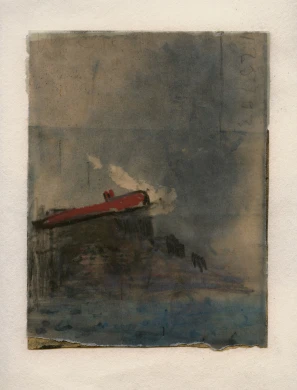
Juan Uslé. That Ship on the Mountain
Tuesday, 25 November 2025 – 7pm
Ángel Calvo Ulloa, curator of the exhibition Juan Uslé. That Ship on the Mountain, engages in conversation with artist Juan Uslé (Santander, 1954) in the Museo’s Auditorium 400 to explore in greater depth the exhibition discourse of this anthological show spanning four decades of Uslé’s artistic career.
The show casts light on the close relationship Uslé’s work bears to his life experiences, establishing connections between different stages and series which could ostensibly seem distant. Framed in this context, the conversation looks to explore the artist’s personal and professional journey: his memories, experiences of New York, his creative process, conception of painting, and ties with photography and film, and the cohesiveness and versatility that characterise his art. Key aspects for a more in-depth understanding of his artistic sphere.
The conversation, moreover, spotlights the preparatory research process that has given rise to this exhibition to grant a better understanding of the curatorial criteria and decisions that have guided its development.
These inaugural conversations, part of the main working strands of the Museo’s Public Programmes Area, aim to explore in greater depth the exhibition narratives of the shows organised by the Museo from the perspective of artists, curators and specialists.



![Miguel Brieva, ilustración de la novela infantil Manuela y los Cakirukos (Reservoir Books, 2022) [izquierda] y Cibeles no conduzcas, 2023 [derecha]. Cortesía del artista](https://recursos.museoreinasofia.es/styles/small_landscape/public/Actividades/ecologias_del_deseo_utopico.jpg.webp)
![Ángel Alonso, Charbon [Carbón], 1964. Museo Reina Sofía](https://recursos.museoreinasofia.es/styles/small_landscape/public/Actividades/perspectivas_ecoambientales.jpg.webp)